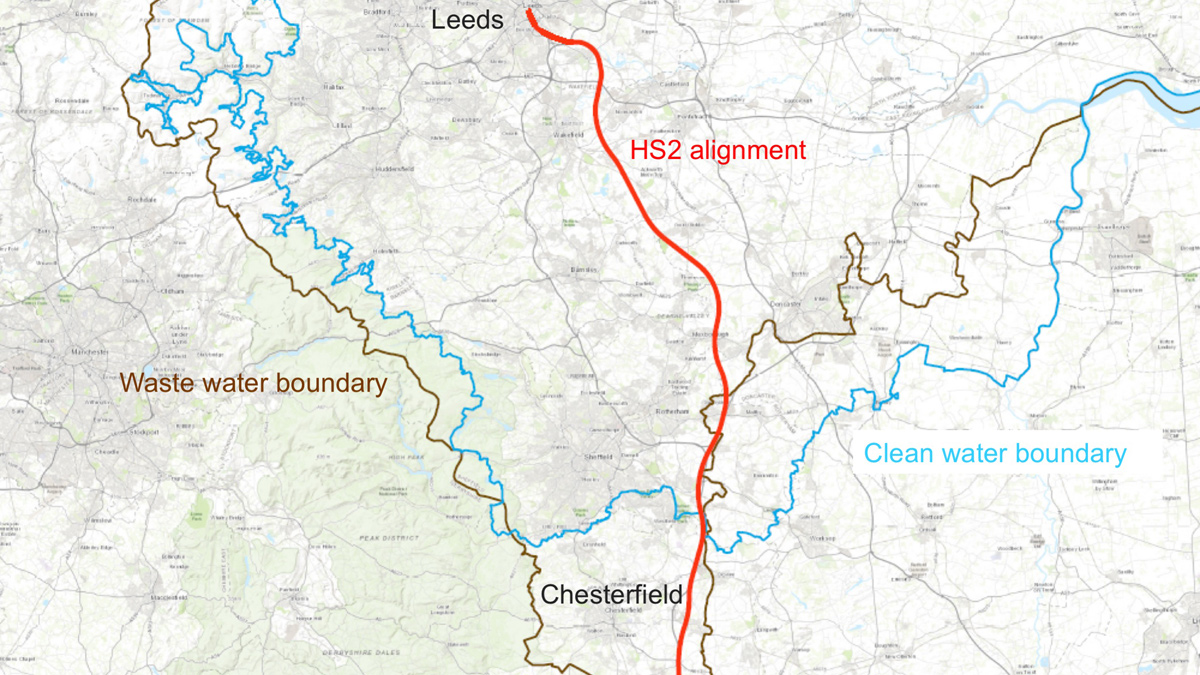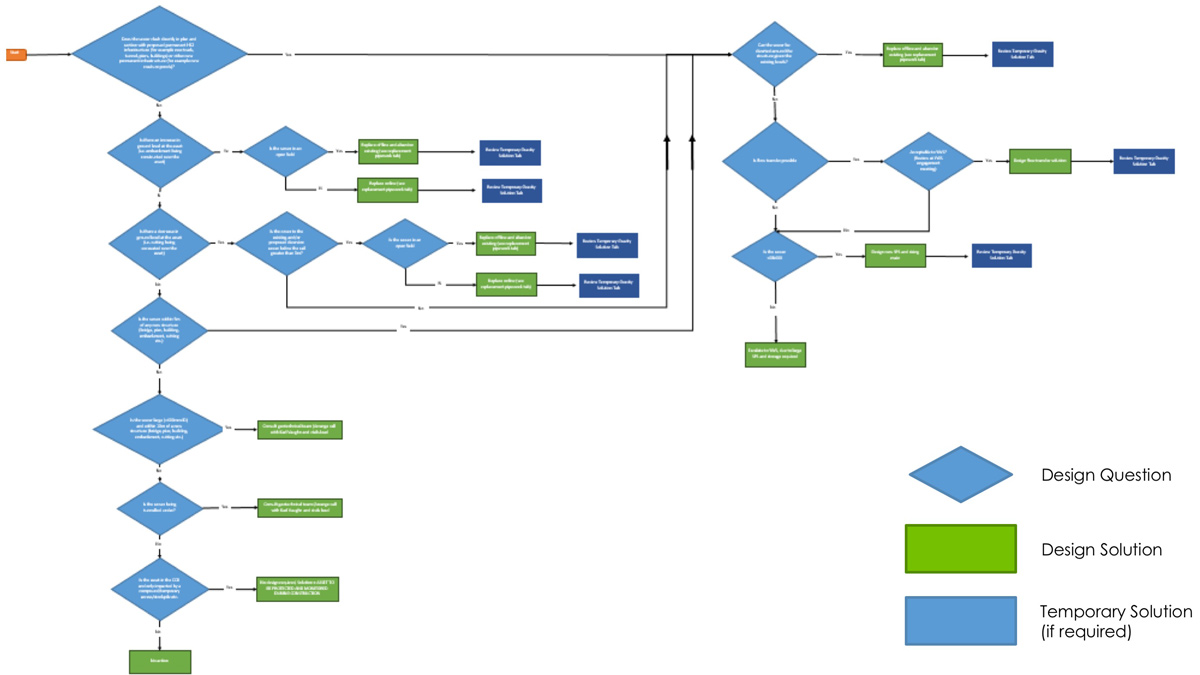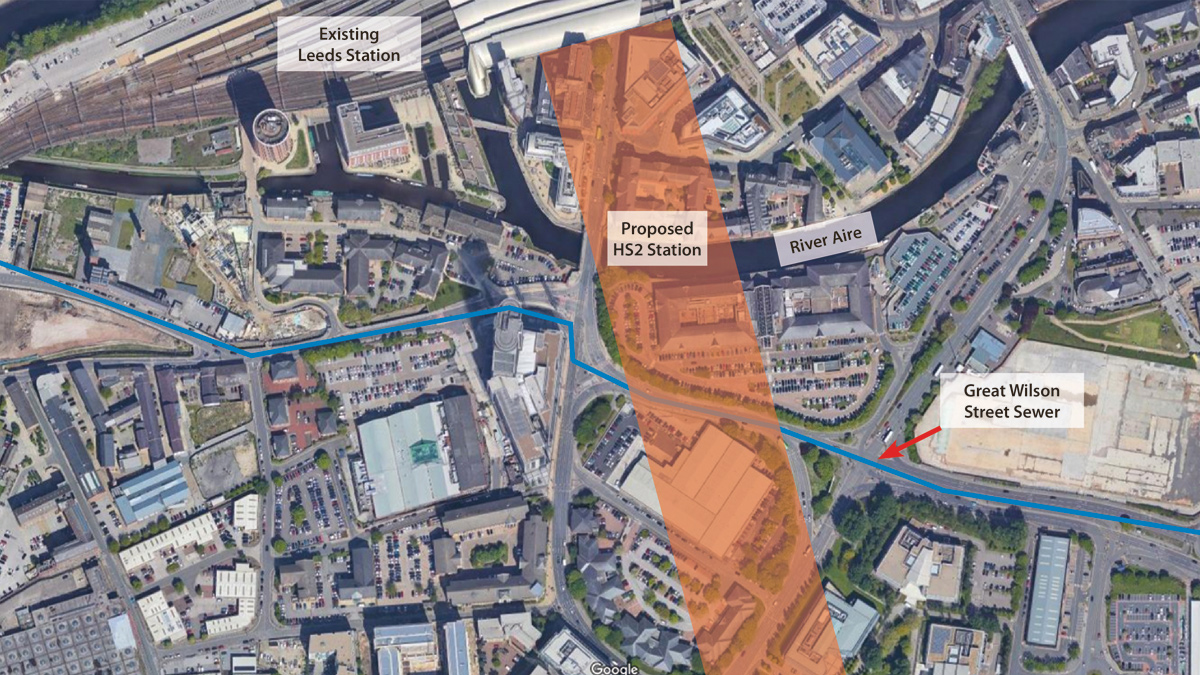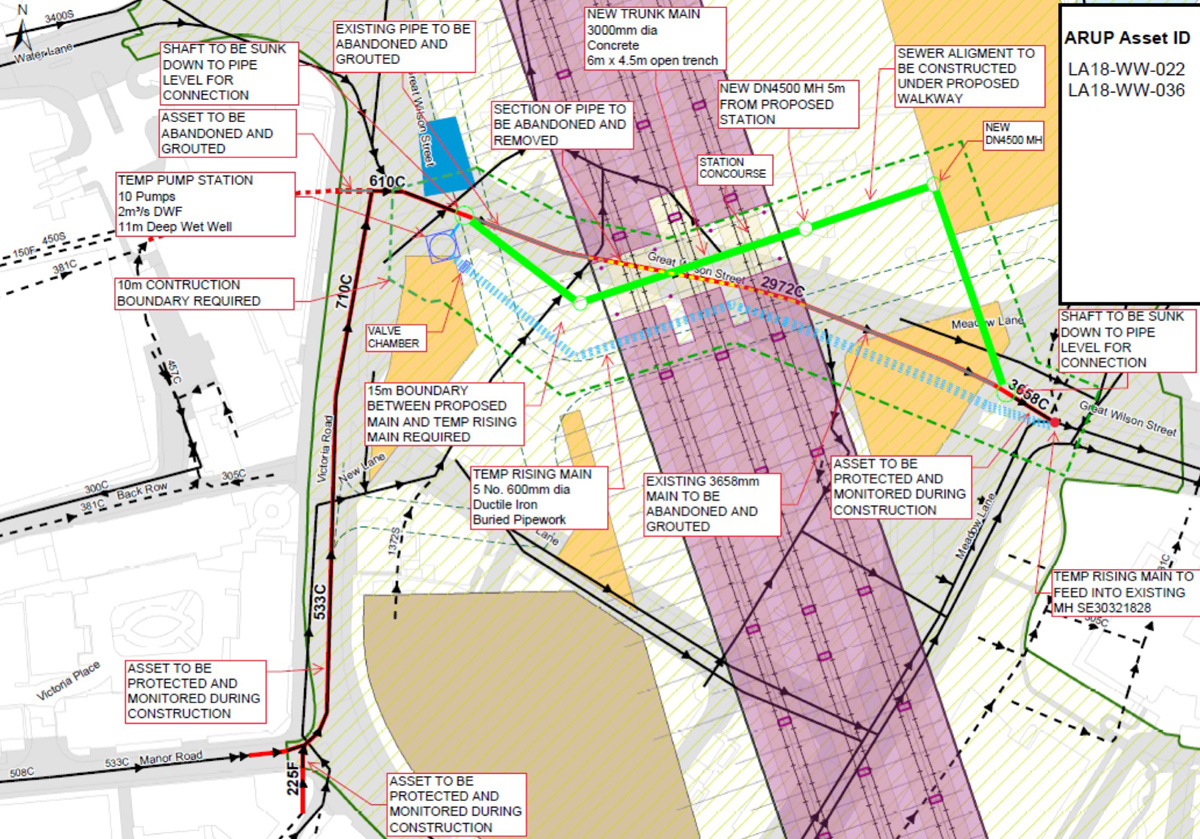HS2 Impact Assessment (2020)

HS2 route through Yorkshire
High Speed 2 (HS2) will be the UK’s new £56 billion high speed railway linking London to the Midlands and north of England with some sections of the route already under construction. The new high-speed railway line in Yorkshire will run from Chesterfield to Leeds. Yorkshire Water are the water and wastewater authority in this region and the new railway is expected to cross through 100kms of Yorkshire Water’s operational area, putting approximately 400 (190km) of their assets and a number of strategic sites at risk of impact. As Yorkshire Water’s Strategic Planning Partner, Stantec UK were asked to assess, analyse, and develop mitigation solutions to all 400 impacts for inclusion into HS2’s Hybrid Bill submission to Parliament. The output of this Impact Assessment included an outline mitigation solution, a working area plot and a budget estimate for each asset.
This project was the first of its kind for Yorkshire Water and caused significant concern due to the variability and complexity of the impact on their asset base. Stantec was able to advise and appease concerns by drawing on extensive experience in the water industry from within the company. Using a team of experts experienced in impact assessment work for other clients affected by major infrastructure projects, Stantec developed a tailored project methodology for Yorkshire Water.
The challenge
At the beginning of the project, the scale of work Stantec were faced with was vastly unknown due the large number of varied assets being impacted, ranging from small diameter plastic water mains to large Victorian brick sewers. There was also a tight completion timeframe of four months due to the Hybrid Bill submission, and Stantec’s resources in the local area were constrained at the time because of other ongoing work. Due to the scale of the project, a large amount of data required collecting, reviewing, and assessing. Several different parties were involved leading to vast amounts of varying data formats, so an innovative approach was required to assess the impacts and begin designing solutions quickly and effectively.

Example of a process flow diagram – Courtesy of Stantec
Developing a new approach
The team turned to GIS software and began developing bespoke routines to analyse HS2’s design against Yorkshire Water’s assets. By obtaining the proposed HS2 track alignment design drawings and combining them in a GIS platform with an electronic extraction of Yorkshire Water’s asset data base, Stantec undertook a ‘clash analysis’ which allowed the team to very quickly identify all railway and YW asset interactions. Individual impact plots for each individual interaction were also able to be rapidly produced in bulk for the engineers to begin solution analysis. This process allowed for quick and efficient data transfer electronically with the added benefit of a single team stationed in multiple locations working on the project. Therefore, a global team of 15 civil engineers, across three offices in two different countries was quickly put together to be allocated batches of assets to assess. The teams were then able to design mitigation and protection measures for each asset. This ‘clash analysis’ also created an accurate Asset Register, which allowed progress to be tracked and reported on. The Asset Register will also be used by the client as a baseline for all future asset mitigation discussions and works.
To maintain consistency of approach and best practice by such a large engineering team, Stantec worked with Yorkshire Water to develop a set of Asset Standards for the design solutions. These new standards specified pipe replacement material, size conversion, pressure rating and access points. Other key features for under track crossings included details such as twinning and sleeving pressure pipelines within tunnels to ensure future resilience. The design team also considered temporary works and health and safety across the asset base. Sustainability was an important consideration taken into account during solution design. All assets were reviewed against proposed growth along the route in collaboration with Yorkshire Water’s Land and Planning team to ensure that new assets were futureproofed, and allowing for potential economic growth.
The project team also developed a robust analysis process with a series of clear process maps, which covered the majority of all asset impact scenarios that may be encountered throughout the project. This approach gave the engineering teams clear direction, guidance and maintained consistency, allowing efficient delivery, which was key while using such a large project team working from multiple locations on a wide and varied programme of work. The systematic approach described above was utilised for a large proportion of the assets. However, for a significant number of highly critical assets (approximately 20%) a bespoke approach was required. These included operational sites and key strategic network assets such as large diameter sewers with a much higher consequence in the event of failure.

HS2 Station Location above the Great Wilson Street Sewer – Google Maps – Courtesy of Stantec
Victorian infrastructure meets 21st century railway
One example of the need for a bespoke approach was for a large trunk sewer located in the centre of Leeds. The proposed expansion to Leeds Station is located at the route’s northern terminus. The footprint of the new structure sits over Yorkshire Water’s Great Wilson Street Sewer, which is a 7m deep, 2.3m x 2.9m elliptical Victorian brick sewer encased in concrete with a dry weather flow rate of approximately 2m3/second.
Directly above it will be the new station’s circulation and ticket hall area through which hundreds of passengers will pass each day. The proposed station lift shaft and stairwells are to be constructed within 3m of the trunk sewer, and it was determined by both Stantec and Yorkshire Water that this would pose and unacceptable level of risk to the highly critical sewer.
Failure of the sewer could result in flooding to the River Aire, causing significant environmental issues as well as impacting a large number of customers connected to the upstream network. The design team collaborated with Yorkshire Water to review all possible mitigation options, including diverting the sewer around the structure. However, the hydraulic implications make this concept impossible. To further complicate matters, it is not possible to divert or isolate flows in the sewer due to the high volumes conveyed by this asset. Therefore Stantec came up with the solution to specify a large temporary pumping station consisting of 10 (No.) submersible pumps to ‘over pump’ the entirety of the flows into five 600mm diameter temporary rising mains operating in parallel. The section of the impacted sewer will be abandoned and a new 3m diameter concrete main will be constructed underneath the station concourse and future pedestrian footpaths with all new manholes to be located at a 5m distance from any structures. This solution mitigates any impact of new construction as well as allowing for future access to the sewer for maintenance purposes.

The new station footprint and the Great Wilson Street Sewer solution design – Courtesy of Stantec Key: F: Foul, S: Surface, C: Combined, T: Transition, O: Overflow, TD: Trade effluent, FE: Final effluent, U: Unknown
Effective delivery
Across the project, the team had to quickly engage with a range of stakeholders under significant time constraints due to the variability of the assets and the large geographical area covered. Effective collaboration was key with Yorkshire Water staff. The engineering team hosted fortnightly engagement workshops to review batches of proposals and secure acceptance. Collaboration was also required with both HS2 and their design consultants to fully understand the design proposal. Again, this brought forward a significant number of stakeholders due to the length of the HS2 route within Yorkshire Water’s area. As a result of the vast amount of information exchange required, Stantec further collaborated with Yorkshire Water to establish a new Document Control System to effectively manage information, transfer it and issue it for acceptance.
Summary
This vital and extensive task was delivered on time and budget, and has safeguarded Yorkshire Water’s infrastructure, whilst ensuring future resilience and minimising potential impact on its asset base. The Stantec team demonstrated excellence in delivery and will continue to support Yorkshire Water as this major infrastructure project moves into its next delivery stage. The project received recognition by winning the Sir John Fowler Award at the 2020 ICE Yorkshire and Humber Annual Awards.
With future high-speed rail and other major infrastructure projects on the horizon in the north of England and further afield, this approach could be replicated/modified for other clients to safeguard large portfolios of impacted assets. It can also be used to fully quantify their risk exposure and ensure future resilience.



